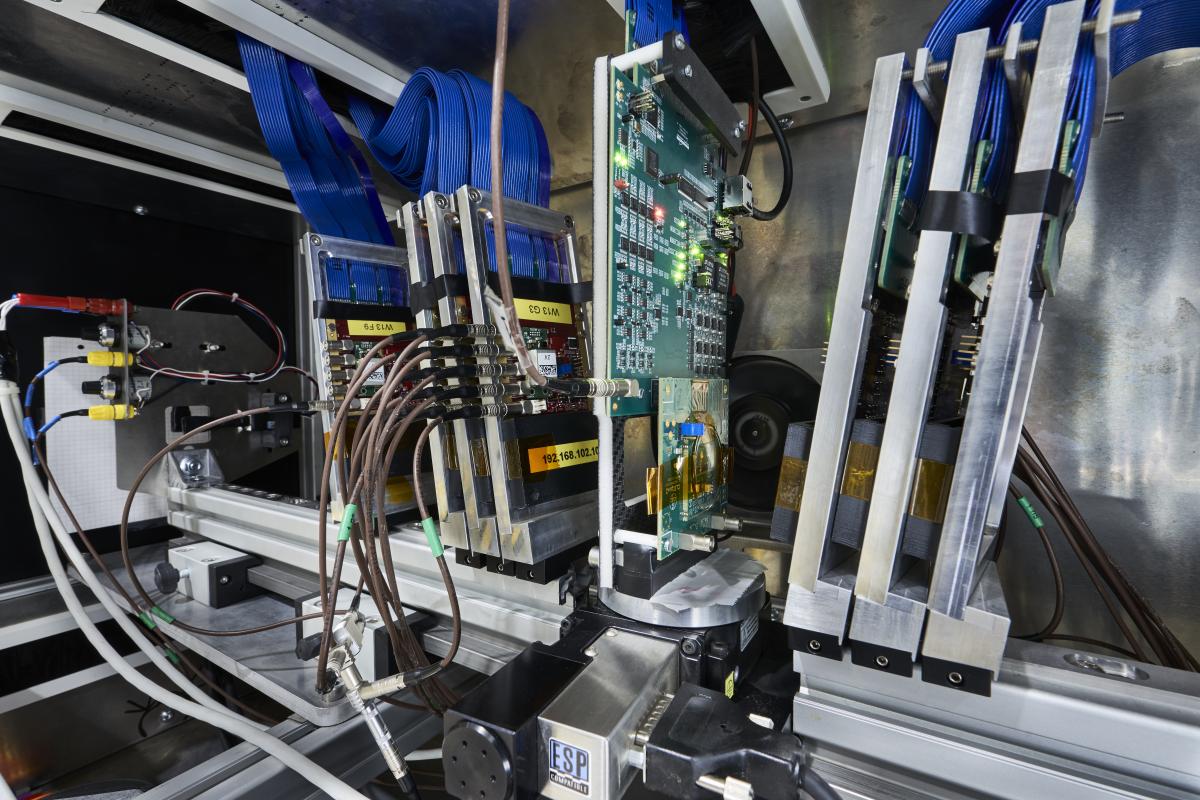Several silicon pixel-detector technologies are being explored in view of the challenging requirements for the CLIC vertex and tracking detectors in terms of high spatial resolution (3-7 µm), precise hit timing (10 ns binning) and very low material budget (down to 0.2% of a radiation length per detection layer).
Members of the CLICdp vertex and tracker project are studying a variety of hybrid devices using the recent CLICpix2 prototype ASIC. In addition, several monolithic depleted CMOS sensors in different technologies are studied (High-Voltage CMOS with ATLASpix as a test-bed for a future CLIC tracker chip, High-Resistivity CMOS with the Investigator leading the way to a dedicated CLICTD prototype chip, and Silicon-on-Insulator technology with various test chips).
Testing new devices with high energy beam particles gives crucial insight into their performance and remaining shortcomings. With LS2 approaching, a series of test beam campaigns in the H6 beam at the SPS have been undertaken. All tests benefit from the timing and position accuracy of the Timepix3-based CLICdp reference pixel telescope installed in the H6 beam line.
The test beam season ended with a final push in early November, profiting from the last few days of proton running in 2018. In parallel with test beam experiments and lab tests, comparing TCAD and Allpix-Squared device and Monte Carlo simulation results with measurements significantly improves the detailed understanding of the different devices.
More photos from the test beam campaign can be found here!
Share

